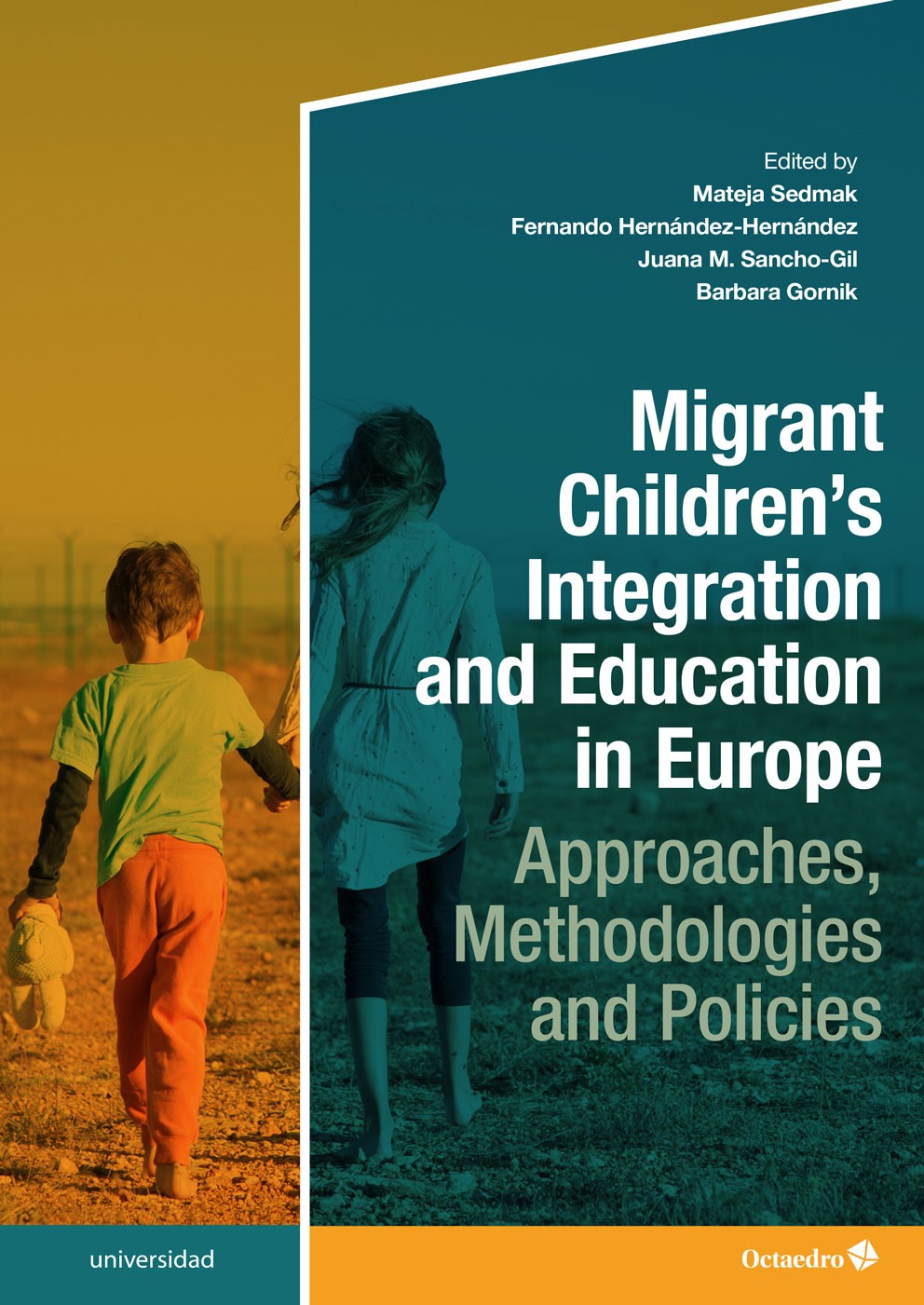Nota de prensa
FICHA TÉCNICA
Migrant Children’s Integration and Education in Europe
OPEN ACCESS
Presentación
The process of the reception of migrant children and young people in European societies positions the education system as one of the most important and powerful resources to foster their participation and inclusion in the host societies. This process is multidimensional, involving different actors (migrant children and young people and their families, schools, teachers and peers, members of the local community, etc.) and works in different ways on a scale ranging from unidirectional assimilation to bidirectional integration and inclusion. When discussing the integration of migrant children and young people, one must take into account that they do not form a homogeneous social group. Rather, they are diversified in terms of past experiences, present situations and future aspirations. They differ in terms of their legal status, as this group includes economic migrants, refugee children, asylum seekers and undocumented and irregular migrants. On top of that, they have different cultural and linguistic backgrounds, belong to different ethnic groups, and differ in terms of gender, age, socioeconomic status, cultural and social capital and so on. The heterogeneity of migrant children as a social group implies that their social integration must be understood as an intersectional phenomenon.
The chapters of Migrant Children’s Integration and Education in Europe: Approaches, Methodologies and Policies pay attention to how we address issues related to the integration and inclusion of migrant children and young people, how we research the problems, what epistemological paths we follow, what methodological approaches we use and, consequently, how research findings are reflected in policies enacted at national and EU level and how they can contribute to improving the everyday life in schools
Índice
Contributors
Editors’ introduction: Reflection on Migrant Children’s Integration and the Role of Education (Mateja Sedmak, Fernando Hernández-Hernández, Juana M. Sancho-Gil, Barbara Gornik)
I. CONCEPTUALISING THE INTEGRATION OF MIGRANT CHILDREN
Chapter 1: Child Migrants ‘Integrating’: What Do We Know So Far? (Shoba Arun, Gavin Bailey, Aleksandra Szymczyk)
Chapter 2: What Are the Problems? Reception Communities in the EU Environment (Vlasta Jalušič, Veronika Bajt)
Chapter 3: Initiatives to Promote the Integration of Migrant Children in Schools and Society: Identifying and Problematising the Notion of ‘Good Practices’ in the Spanish Context (Pablo Rivera-Vargas, Raquel Miño Puigcercós, Fernando Hernández-Hernández)
II. RESEARCH PROJECTS ON MIGRANT CHILDREN
Chapter 4: The Child-Centred Approach to the Integration of Migrant Children: The MiCREATE Project (Barbara Gornik, Mateja Sedmak)
Chapter 5: The Approach of the CHILD-UP Project to Children-Centred and Dialogic Education (Claudio Baraldi)
Chapter 6: A Comprehensive Approach to the Study of Socio-Educational Inclusion of Migrant Children in Europe: IMMERSE Research Project (Eva Bajo Marcos, Inmaculada Serrano, Mª Mercedes Fernández García)
Chapter 7: Possibilities, Difficulties, Tensions and Risks in a Child-Centred Approach in Educational Research (Miguel Stuardo-Concha, Sara Carrasco Segovia, Fernando Hernández-Hernández)
III. MIGRANT CHILDREN’S INTEGRATION AND EDUCATION
Chapter 8: The Challenges of Integrating Migrant Children into the Slovenian Education System (Mirjam Milharčič Hladnik, Klara Kožar Rosulnik)
Chapter 9: Integration of Migrant Children in Spanish Schools: Policies, Practices, Tensions and Challenges (Judit Onsès Segarra, Marina Riera Retamero)
Chapter 10: Cultural Disadvantage and Immigrant Students in Spain: Current Issues and Proposals for Improvement (María José Arroyo González, Ignacio Berzosa Ramos, Inmaculada González-Falcón)
Chapter 11: Education Policy in Intercultural Community Contexts (Maria Jesús Igual Calvo)
Chapter 12: Migrants at School: A Critical Analysis of Educational Linguistic Policies and Practices in Brazil (Gabriela Da Silva Bulla, Rodrigo Lages e Silva, Bruna Souza De Oliveira)
Chapter 13: The Local Dimension of Children’s Integration in the Educational System in Poland (Adam Bulandra, Jakub Kościółek)
IV. INTEGRATION PRACTICES FOR MIGRANT CHILDREN AND YOUTH
Chapter 14: What Challenges and Opportunities Pertain to Introducing Philosophy with Children in Schools to Foster the Wellbeing of Migrant Children and Youth? (Søren Sindberg Jensen)
Chapter 15: Refugee Hospitality Centre in Athens as a Case Study: Good and Not-so-good Practices (Nektaria Palaiologou, Achilles Kameas, Victoria Prekate, Maria Liontou)
Chapter 16: Six Cases of Technology-Mediated Approaches for the Integration of Migrant Children in Spain (Paula Estalayo-Bielsa, Laura Malinverni, Paula Lozano-Mulet, Juana M. Sancho-Gil, Miguel Stuardo-Concha)
Chapter 17: I Am Home, Wherever I May Roam: ICT as a Tool for the (Two-Way) Integration of Migrant Youth in the European Union (Blaž Lenarčič, Lucija Dežan)
Barbara Gornik; Fernando Hernández-Hernández; Juana María Sancho-Gil; Mateja Sedmak
9788418615375
16277-1
